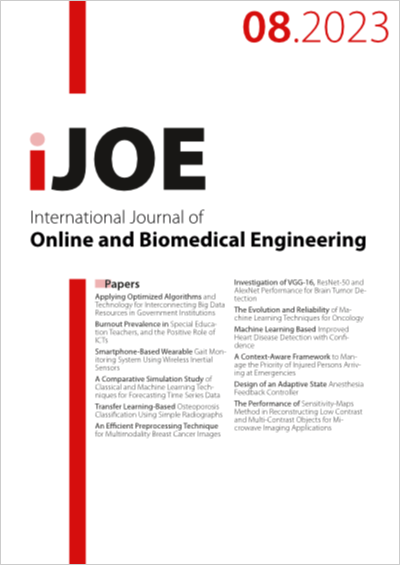Transfer Learning-Based Osteoporosis Classification Using Simple Radiographs
DOI:
https://doi.org/10.3991/ijoe.v19i08.39235Keywords:
DXA, CNN models, BMD, X-raysAbstract
Osteoporosis is a condition that affects the entire skeletal system, resulting in decreased density of bone mass and the weakening of bone tissue's micro-architecture. This leads to weaker bones that are more susceptible to fractures. Detecting and measuring bone mineral density has always been a critical area of focus for researchers in the diagnosis of bone diseases such as osteoporosis. However, existing algorithms used for osteoporosis diagnosis encounter challenges in obtaining accurate results due to X-ray image noise and variations in bone shapes, especially in low contrast conditions. Therefore, the development of efficient algorithms that can mitigate these challenges and improve the accuracy of osteoporosis diagnosis is essential. In this research paper, a comparative analysis was conducted Assessing the accuracy and efficiency of the latest deep learning CNN model, such as VGG16, VGG19, DenseNet121, Resnet50 and InceptionV3 in detecting to Classify Normal and Osteoporosis cases. The study employed 830 X-ray images of Spine, Hand, Leg, Knee, and Hip, comprising of Normal (420) and Osteoporosis (410) cases. Various performance metrics were utilized to evaluate each model, and the findings indicate that DenseNet121 exhibited superior performance with an accuracy rate of 93.4% with Achieving an error rate of 0.07 and a validation loss of only 0.57 in comparison with other models considered in this study.
Downloads
Published
How to Cite
Issue
Section
License
Copyright (c) 2023 pooja

This work is licensed under a Creative Commons Attribution 4.0 International License.



